|
|
|
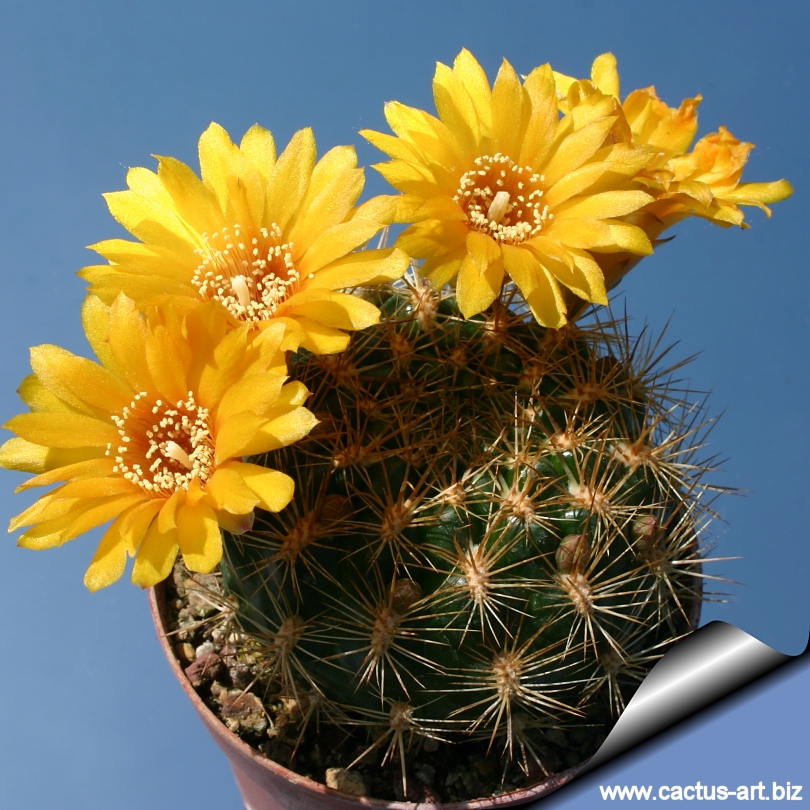
Weingartia pilcomayensis
This is one the most vigorous and
earliest bloomers. Flowers are (usually) yellow and comparatively large.
|
|
Description: Clustering
very woolly cactus with bright yellow flower. W. pilcomayensis
is probably very closely related (if not the same) to
W. lanata.
Stems: Short-cylindrical up to 20 cm tall with few and broad
spiraling ribs with prominent chins.
Areoeles: Large with substantial wool present similar in this
respect to
W. lanata and W. platygona giving a woollier
crown than for W. neocumingii.
Spines: Numerous, more than 24, both radial and central spines
are fine yellowish, strong and curved.
Flower: Yellow or pale orange, funnel-shaped 2,5 cm across (or
more and usually larger than W. neocumingii), with reddish
edged scales, they are produced (unusually) all over the body of the
plant expecially near the very tips of the stems differing from
other rebutias in that its flowers appear very near the meristem as
opposed to the lower, stemside and base locations of those others.
Blooming season: The flowers are produced in early summer and remain
open for five or six days.
|
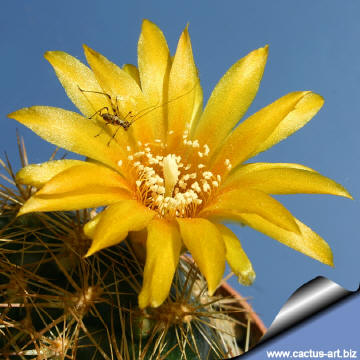 |
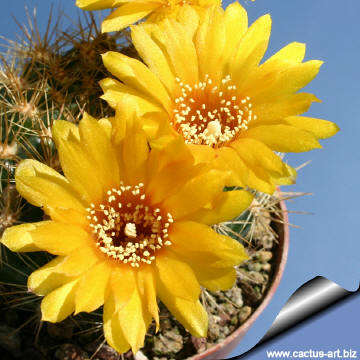 |
|
This species blooms several times in one season. |
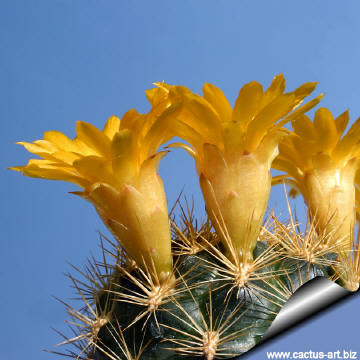 |
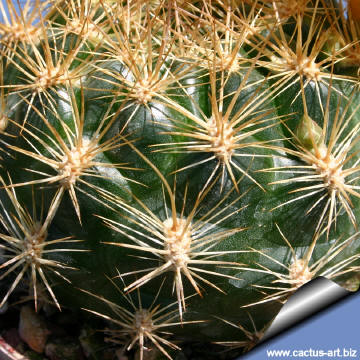 |
|
Cultivation: Full sun to light shade, Water regularly in summer but
do not overwater. Keep dry or slightly moist in winter at a minimum
temperature of 5°C (But Hardy to -4°C or less).
It is better that they are repotted regularly. Repotting will increase
size of stems and the number of flowers produced. Repot yearly until
reaching about 100 mm in size, then every two or three years will
suffice. Repotting is best done at the end of winter but can be done at
other times. Do not water for a couple of weeks after repotting to
reduce risk of root rot via broken roots.
Propagation: Offsets (seldom available), or seeds
Advertising |
|
|
|
|
Family:
Cactaceae (Cactus
Family) Weingartia
pilcomayensis Cárdenas 1964 (Basionym)
In: Cactus (Fr.) 82: 44/45, 1964
Type: Card. 6128
Field numbers: KK829; Lau 991.
Accepted
Scientific name: Rebutia
neocumingii (Backeb.) D. D.R.Hunt 1987
Origin: W. pilcomayensis is very similar to
W. lanata but is not part of the typical population of
W. lanata around Chuquichuqui, in fact it comes from Puente
Pilcomaya on the Rio Pilcomayo on the south of Sucre.
Conservation status: Listed in
CITES appendix 2.
Synonyms:
- Weingartia lanata subsp. pilcomayensis
(Card.) Don. comb. nov.
- Weingartia lanata subsp.pilcomayensis
forma platygona (Card.) Don. comb. nov.
- Weingartia platygona
Cactus (Fr.) 82: 50/51, 1964 (Field number:. KK1202)
- Sulcorebutia pilcomayensis
- Weingartia lanata ssp. pilcomayensis
- Rebutia neocumingii ssp pilcomayensis
- Weingartia neocumingii Backeberg
1950
- Sulcorebutia neocumingii (Bckbg.) Brandt 1979
- Gymnocalycium neocumingii (Backeb.) P. Hutchison
Note: All the 60 species of genus
Weingartia have been transferred to synonymy status under the
genus Rebutia; about 45 or so of them as synonyms of two
species, R. canigueralii and R. neocumingii.
The genus Weingatia was always considered difficult to
differentiate from Gymnocalycium, Neowerdermanniana,
and Sulcorebutia and its name has had a very eventful
history which evidently continues in controversy today.
|
|
|
|
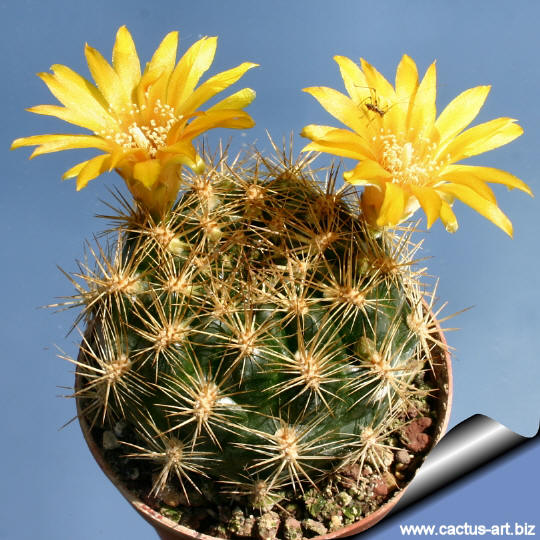
Photo of conspecific taxa, varieties,
forms and cultivars of
plants belonging to the Weingartia (Rebutia)
neocumingii
complex
(This
Taxon has lots of synonyms
whit several controversial varieties and subspecies):

 |
|